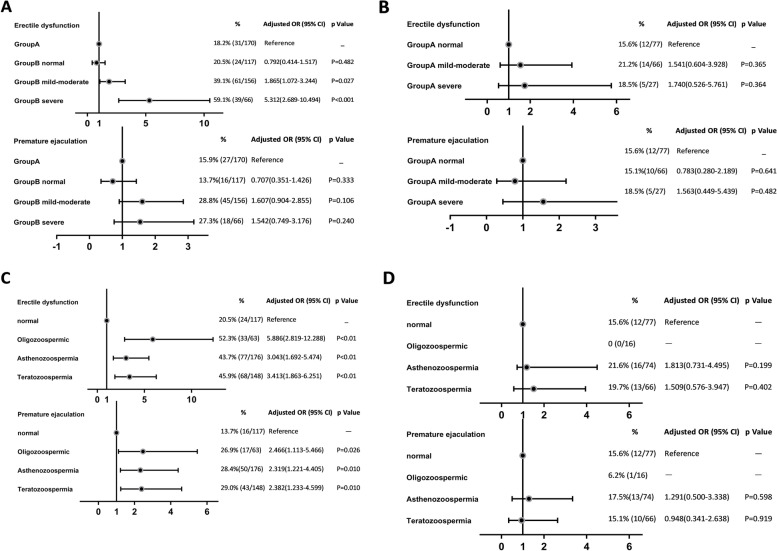Fig. 1.
Comparison of sexual dysfunction according to impairment of sperm quality among the groups. A Comparison prevalence of sexual function among patients in Group B with the severity of sperm quality impairment, with Group A as reference. B Comparison prevalence of sexual function among patients in Group A with the severity of sperm quality impairment; C, D Comparison prevalence of sexual function among patients in Group B (C) and Group A (D) with the type of sperm quality impairment, with normozoospermic men as reference. Potential importance in univariate analyses on the aforementioned clinical characteristics were included in analyses as potential confounders (age, the participant’s monthly household income, frequency of night shifts, duration of infertility, and engagement in TI). Groups A indicate: Patients who either never received a routine infertility work-up or done so recently within the last 6 months; Groups B indicate: Patients who previously received a sperm quality assessment at least 6 months or more prior

